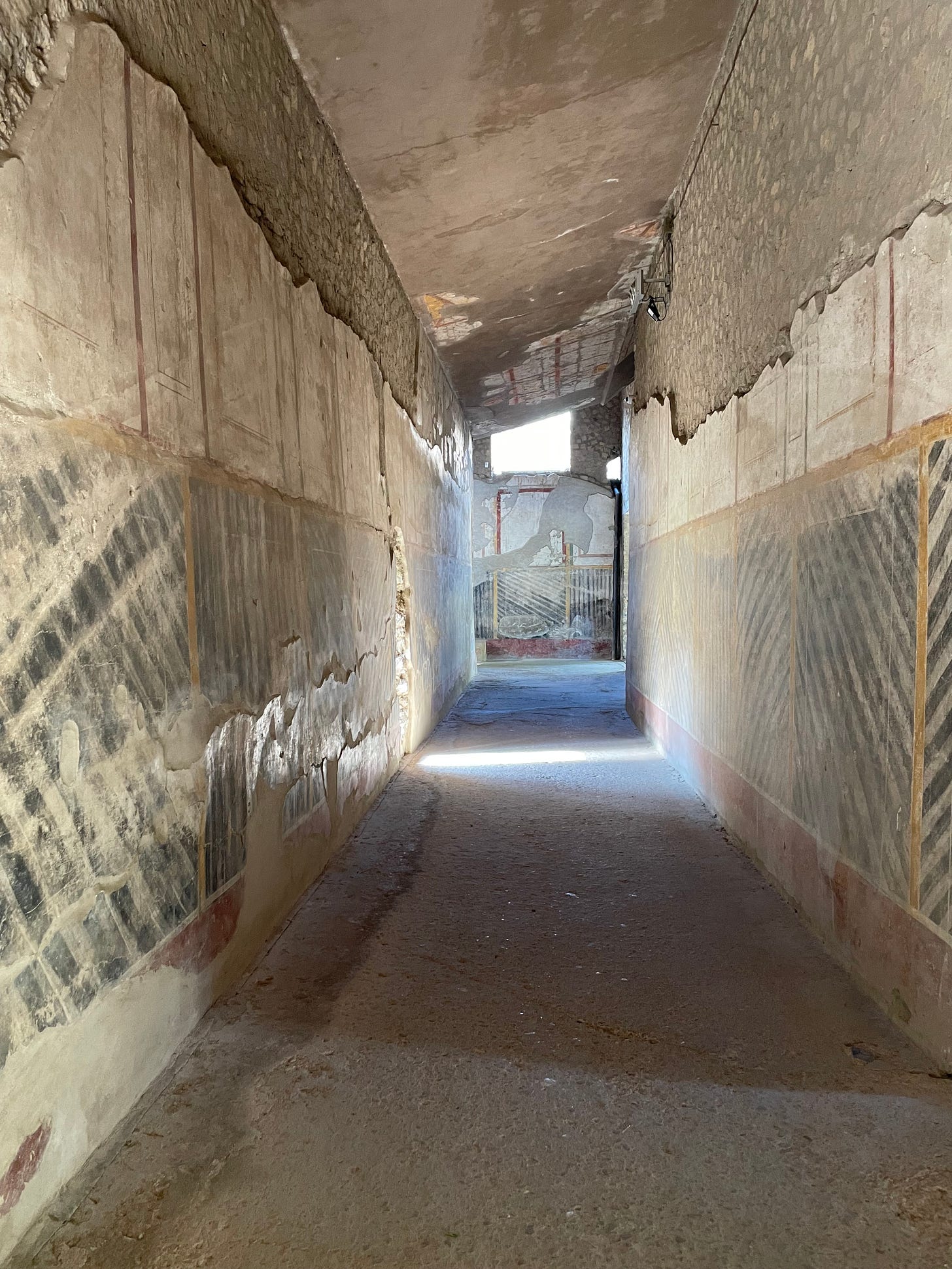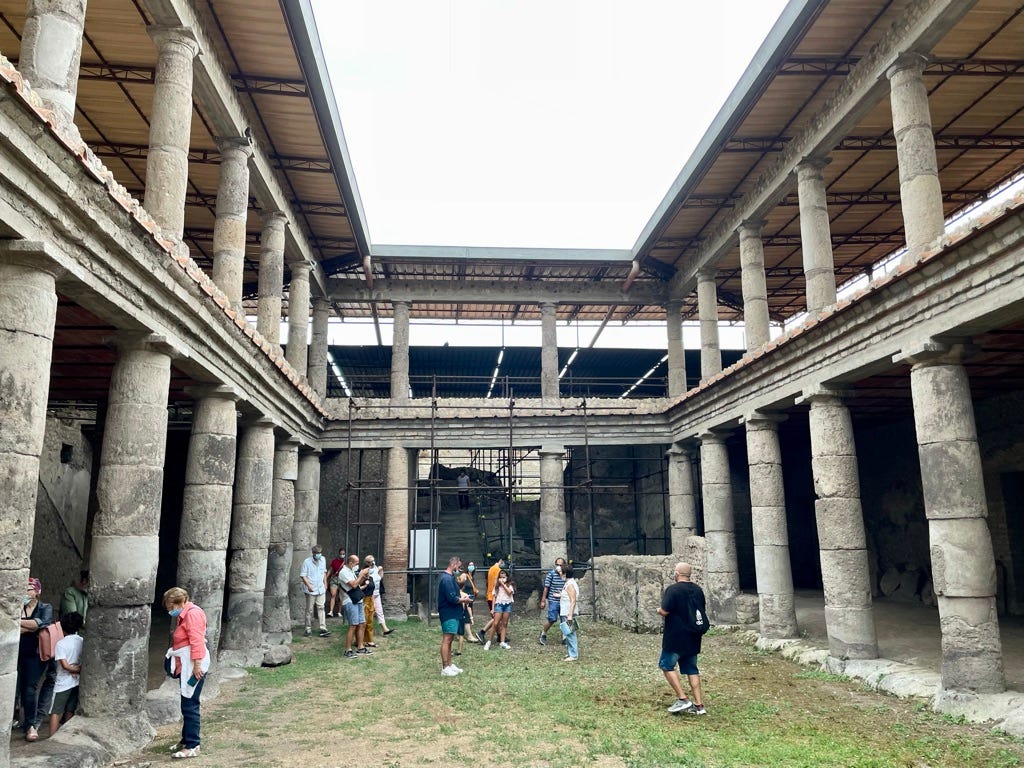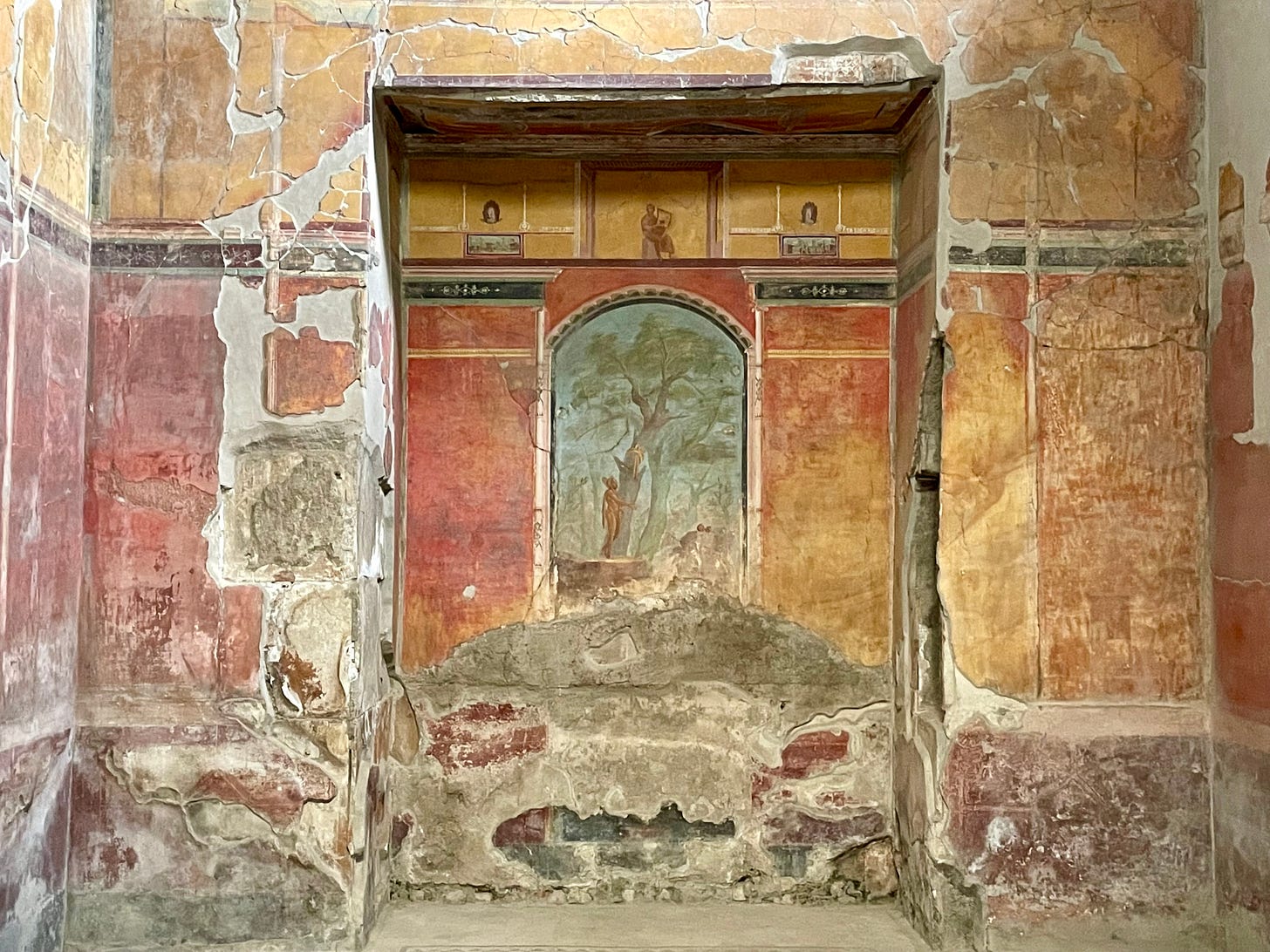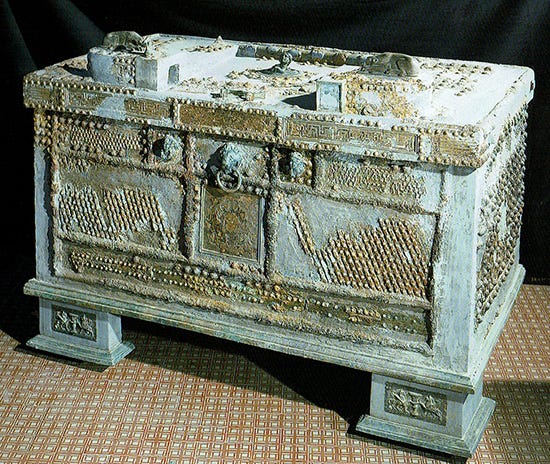Thirty Feet Under
Death and new life near Pompeii
Imagine Villa Oplontis, the archaeological site between Herculaneum and Pompeii, like the Versace mansion in Miami Beach. Locals call it Villa Poppaea because of the chance it once belonged to Nero’s second wife, Poppaea Sabina, who was a native of nearby Pompeii. It was a super luxe vacation home with all the amenities for hosting imperial Rome’s elite. It boasted an infinity pool, private beach, opulent guest rooms, and an army of enslaved people to take care of every whim or need. Hungry for some fresh seafood? Done, the villa has its own fish farm. Want to unwind in a hot steam bath? Senator, follow me to our private calidarium.
The villa was empty when Vesuvius erupted in 79 AD covering it in 33 feet of volcanic material, and destroying all the Vesuvius Coast towns south of Naples. Maybe it was still being renovated following the earthquake of 62, maybe it was recently sold and the new owners hadn’t yet moved in. The site was first discovered in the 16th century, but not meaningfully excavated and studied until the 1980s, but was abandoned once again. In 2005, work was reignited with The Oplontis Project which brings together cross-disciplinary teams who are making some of the most exciting discoveries in the history of archaeology.
The most history changing finds have been made inside the ancient warehouse adjacent to Villa Oplontis, discovered by accident in 1972 when ground was broken for a high school. Officially referred to as “Villa B”, the warehouse seems to have been a shipping depot for wine, very much active as shown by over 50 skeletons found together in a sea-facing room, likely awaiting a rescue ship. These bones are a trove of information for bio-archaeologists who are studying the diet and health of the Romans.
Also discovered were hundreds of pomegranates and stacks of amphorae filled with new wine, both fruit of a fall harvest, making the widely accepted date of August 24th highly implausible as the day Vesuvius erupted. Finally, a coin found in a lock box proves that the eruption most likely took place in October.
For people who would like to see Pompeii, but would prefer a smaller, more intimate, yet complete experience, consider this more off-the-beaten-path site in Torre Annunziata. You can learn more about the fascinating discoveries at Oplontis in my class “The Real Housewives of the Vesuvian Coast” on Friday January 21st at 5pm EST. The class will also be recorded and available to watch for 2 weeks. In the meantime, enjoy these photographs from my most recent research trip in late August 2021.





In August of 2021, Villa B was opened to the public for the first time ever for four consecutive Friday evenings. I eagerly made an appointment for one of the coveted spots and took these photographs.







Hello, this was a wonderful article to read. Pompeii has always been a place I would like to visit in my future, and I loved learning more about it from your article. I found the part where you talked about the coin in the box particularly fascinating, as it has told us an immense amount of information on what we know about the date of Pompeii's eruption. Thank you for sharing!